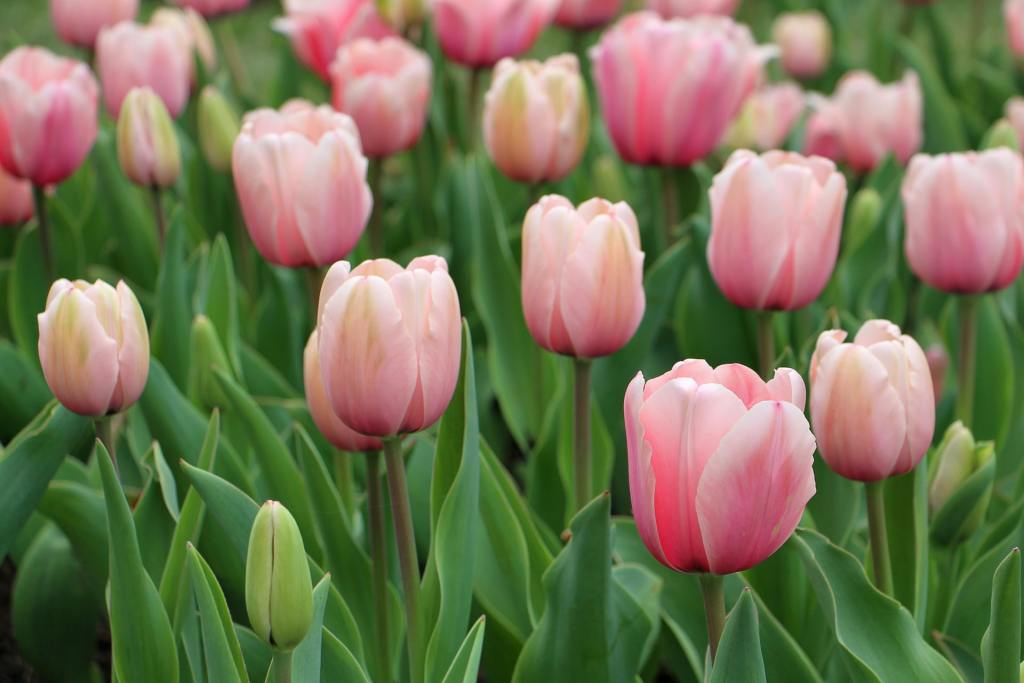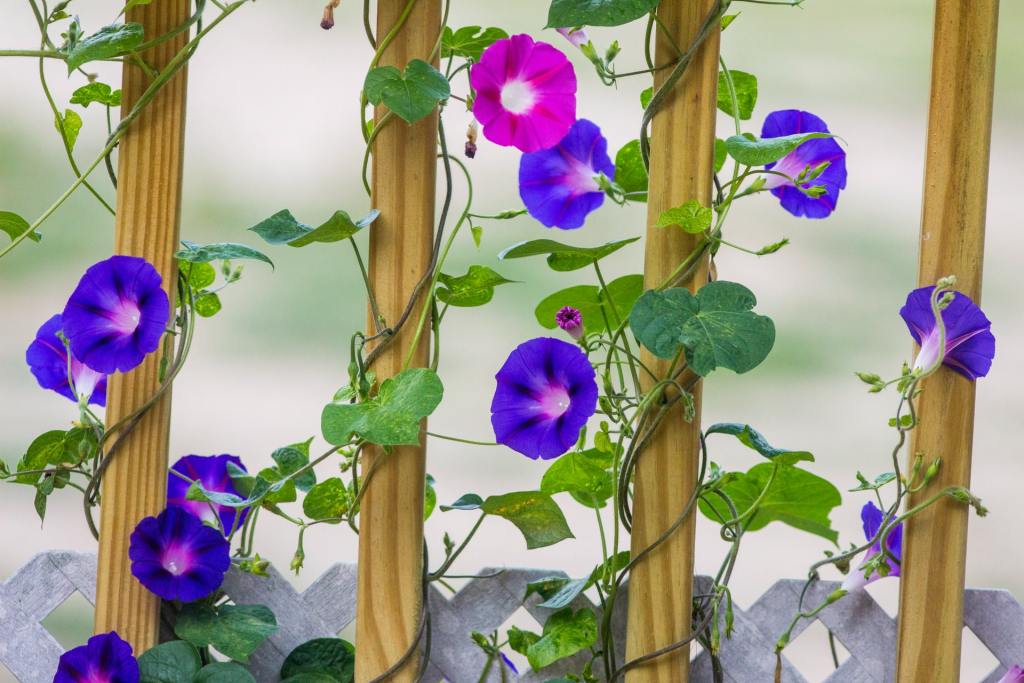Whether you have an ugly fence, you want to cover up, or a pretty fence you wish to draw attention to, adding beautiful spring plants is the solution. You can bring attention to a cute white-painted fence or drama to an iron one with shorter plants. Install some lattice on that ugly fence and grow climbing plants to cover it up, so you never have to see it again! Here are the best plants for a fence line to either add to an already-cute fence or to cover up that ugly one!
1. Tulips
Bulb flowers that come back year after year, like tulips, are often the most show-stopping flowers in the spring. They have bright and bold colors that can’t be ignored and would make a perfect addition to a fence line. Depending on the variety, they grow up to 2 feet tall, and most are hardy in zones 3 through 8.
Tulips come in every color except blue, so you’re sure to find one that suits your aesthetic needs. They prefer full sun and only need watering after you plant them and when there’s an extended dry spell.
2. Hydrangeas
These are taller plants with big, fluffy, beautiful blooms that grow wonderfully along a fence line from the middle of summer through fall. Hydrangeas would be great to add to an already pretty fence. Their flowers change colors based on the soil’s pH level, so you could control the color with a little bit of science!
Hydrangeas love warm morning sun but hate afternoon heat, so ensure your fence meets these requirements before planting. If your plants will be getting an abundance of sun, try mulching them to keep the soil moist and cool. Most varieties are hardy in zones 5 to 9, and within those zones, they are low maintenance once established.
3. Verbena bonariensis
Verbena bonariensis are stunning plants that grow up, not out, so they work perfectly along a fence. They don’t take up too much space but still grow tall and add color to a fence line. Their tall, skinny stems won’t completely cover the fence, but they would be a great addition to a painted or iron fence.
The delicate, tiny flowers like full sun and want dry, well-draining soil. Verbena bonariensis blooms appear in the spring and will keep flowering until fall and come in white, red, purple, pink, and peach. They are hardy in zones 9 to 11, so they aren’t too fond of cooler weather.
4. Japanese anemones
Hardy in zones 4 through 8, Japanese anemones like moist soil and full or partial sun. These plants are also known as Japanese thimbleweed and are tall perennials resistant to deer and rabbits. Their flowers are their most exciting feature and appear for six to eight weeks in the early fall.
The blooms have large pedals with adorable button-shaped centers. Their unique and add an exciting look to any landscape design. The Japanese anemone is perfect for growing along fences to create interest and long-lasting color during an often dull growing season.
5. Clematis
The name of this plant tells you it’s a climber. With a large variety to choose from, clematis is the perfect plant to grow up a fence. If you’re looking for year-round greenery, there are evergreen clematis with pretty green leaves even in winter. However, if you choose the clematis to grow and cover your fence, you’ll need a trellis or wire to help it climb up.
There are many varieties of clematis and some bloom early in the season, some in the middle of the season, and some late, so you could grow all these along your fence and constantly have lovely blooming flowers. Clematis plants don’t require any pruning, and once they are established, they are pretty low maintenance. Some varieties are hardy from zone 4 all the way up to zone 9, so you’re sure to find one that suits your climate needs.
6. Morning glory
You should consider the morning glory when looking for a climbing fence plant that quickly covers it up. These are fast-growing climbers with heart-shaped leaves and brilliantly blue flowers from summer to early fall. The blooms open in the morning and close again in the afternoon, hence their name!
Morning glory grows up to 10 feet in one season, but they’ll need full sun to do this. Luckily, this plant is pretty low maintenance, and you won’t have to prune it to keep it healthy. However, if you don’t want it to spread, you’ll need to remove the seed pods before they release the seeds. If you don’t, your neighbor might soon have morning glory, too!
7. Climbing roses
There’s a large variety of climbing roses, and you can find them in almost every shade, size, and color. There are fast-growing varieties as well as slower-growing ones. The beauty in climbing roses is there’s one for every situation, and you can find what you’re looking for to add to your fence line.
However, you will need to add a wooden or sturdy wire trellis to help the roses climb, and they won’t be able to grow up a flat fence. They are hardy from zone 5 to 9, so you’ll find one that suits your climate conditions.
Even a nice fence can still benefit from a few strategically placed plants growing along it, and an ugly fence could turn into your favorite element in your garden with one of those climbing plants blooming on it. No matter your reason, adding plants to your fence line adds another layer of stunning landscape design that you might not have thought of before. So use some of these spring plants to get the job done!




